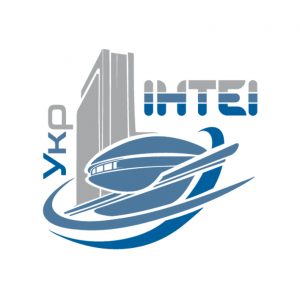http://doi.org/10.35668/2520-6524-2019-2-09
Ryzhova O.P. — PhD in Engineering, Associate Professor, vice-rector for scientific and pedagogical work of Ukrainian State University of Chemical Technology, 8, Haharin Ave., Dnipro, Ukraine, 49005; +38(056) 46-21-21; olgaryzhova2017@gmail.com
Kyslychna R.I. — PhD in Engineering, Researcher of Ukrainian State University of Chemical Technology, 8, Haharin Ave., Dnipro, Ukraine, 49005; +38(056) 47-38-96; Kislichnaya.ri@gmail.com
Nagorna T.I. — PhD in Engineering, Associate Professor of Ukrainian State University of Chemical Technology, 8, Haharin Ave., Dnipro, Ukraine, 49005; +38(056) 47-38-96; nagornaya.nti@ gmail.com
Naumenko S.Yu. –PhD in Engineering, Associate Professor of Ukrainian State University of Chemical Technology, 8, Haharin Ave., Dnipro, Ukraine, 49005; +38(056) 47-38-96; naymenko.su@gmail.com
GRAY NON-PIGMENT GLASS COATINGS
Abstract. Color is an important indicator of the aesthetic evaluation of the quality of materials and products for various purposes. The visual perception of the color by the human eye is subjective. For achromatic colors, the human eye responds better to a change in brightness (lightness) of dark colors than light ones, since the relative increment of lightness is higher in the first case than in the second. Gray is an achromatic color, which is the result of a mixture of classic colors — black and white. Depending on the lightness, the shade of gray changes from black (lightness 0%) to white (lightness 100%). In combination with other colors, it decorates any interior, emphasizes its dignity. Gray color is in great demand in the manufacture of steel enamelled household articles. To obtain a light gray color, the basic sodium borosilicate system (Na2O-B2O3-SiO2) was chosen. For the experimental enamels, physicochemical properties were determined, and for glass coatings – lightness and brilliance. In order to improve these properties, the components in the composition of enamels were varied. Leachability of the best enamel was 0.11 cm3/g, temperature coefficient of linear expansion – 94.2 · 10-7 degrees-1, spreadability – 24.3 mm, gloss of the glass layer – 76%, lightness – 57%, the coating withstood the effect of 4%th acetic acid for 5 minutes without losing gloss. On this enamel, the dependence of lightness and tint of the glass layer on the amount (0.067-0.6 parts by weight) of coloring oxides (CuO, NiO, CoO), which were injected in excess of 100.0% by weight, was studied. The optimum content of the coloring components was determined. Non-pigmented glass coatings of light gray color with a delicate blue tint and lightness (60-70%) have been developed, which can be used for enameling kitchen and tableware, as well as for other types of steel articles for household use.
Keywords: gray color, glass enamel, enameled products, amount of coloring oxides, lightness.
REFERENCES
- Bragina, L.L., Zubehin, A.P., Belyiy, Ya.I. at al. (2003). Tehnologiya emali i zaschitnyih pokryitiy [Technology of enamel and protective coatings]. Harkov (in Ukr.): NTU “HPI”; Novocherkassk: Yurgtu (NPI).
- Shalygina, O.V., Pavelkova, V.A., Gavrylina, L.O. (2013). Zahysni bezpigmentni pokryttia sirogo koloru dlia poroshkovoi elektrostatychnoi tehnologii [Protective non-pigmented gray coatings for powder electrostatic technology]: collection of scientific works. PAT “Ukrndivognetriviv іm. А.S. Berezhnogo”, 113, 212–217.
- Kotsik, I., Nebrzhenskiy, I., Fanderlik, I. (1983). Okrashivanie stekla [Glass coloring]. Moscow (in Russ.): Stroyizdat 1983.
- Ilina, O.V., Bondareva, K.Yu. (2008). Tsvetovedenie i koloristika [Color science and coloristics: studies]: tutorial. St. Petersburg (in Russ.).
- Goleus, V.I. (2016). Osnovy himichnyh tehnologii skla, sklovyrobiv ta sklopokryttiv [Fundamentals of chemical technologies of glass, glassware and glass coverings]: tutorial. Dnipropetrovsk: litograf (in Ukr.).
- Belyy, Ya.I., Ponomarchuk, S.M., Kislichnaya, R.I., Ryzhova, O.P. (1998). Legkoplavkaya stekloemal dlya okrashennyih besftoristyih pokryitiy [Low-melting glassy metal for painted fluoride-free coatings]. Trudy ukrainskogo instituta stekla [Works of the Ukrainian Glass Institute]. Konstantinovka (in Ukr.), 229–233.
- Petukhov, R.V., Tereshchenko, I.M., Kravchuk, A.P., Karpovich, E.V. (2010). Okislitelno-vosstanovitelnyiy potentsial steklomassyi i tehnologicheskie protsessyi v proizvodstve listovogo stekla [Redox potential of glass and technological processes in the production of sheet glass]. Trudy BGTU [Works of the BSTU]. Seria ΙΙΙ. Chemistry and technology of inorganic substances. XVIII, 80–82.

